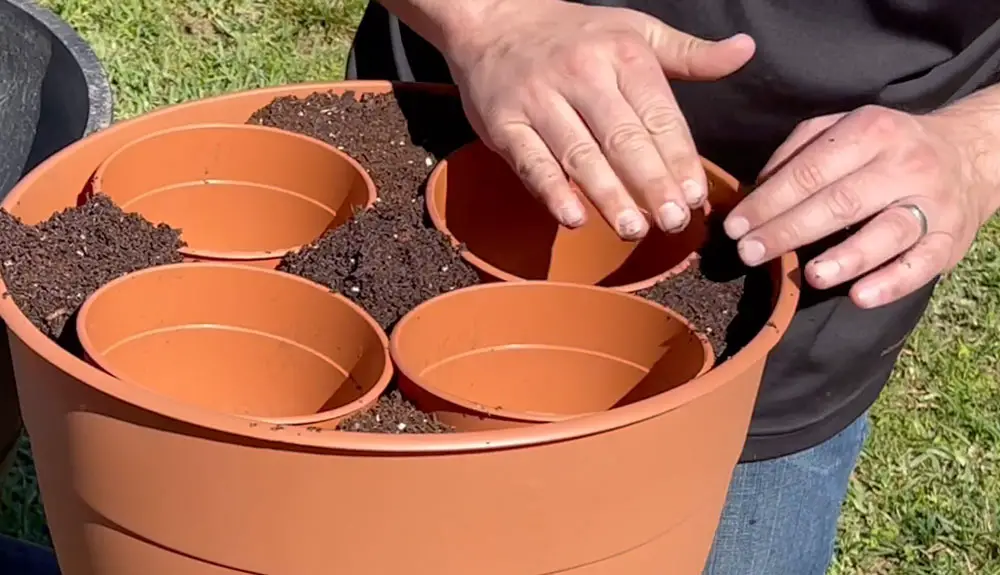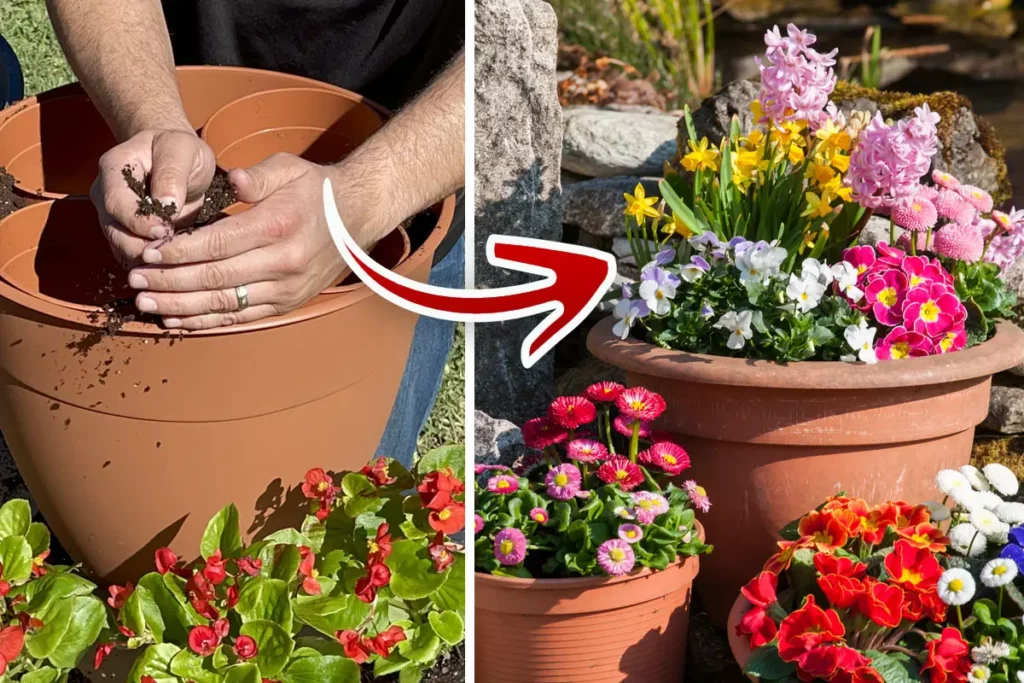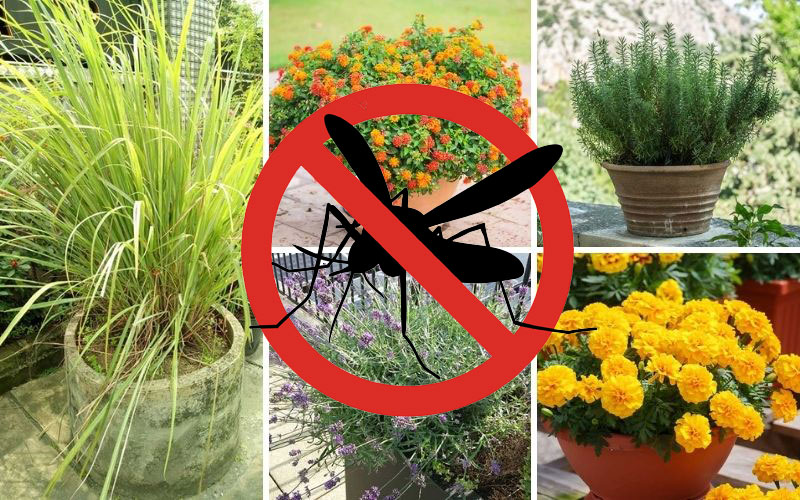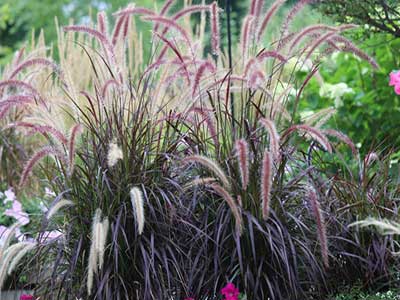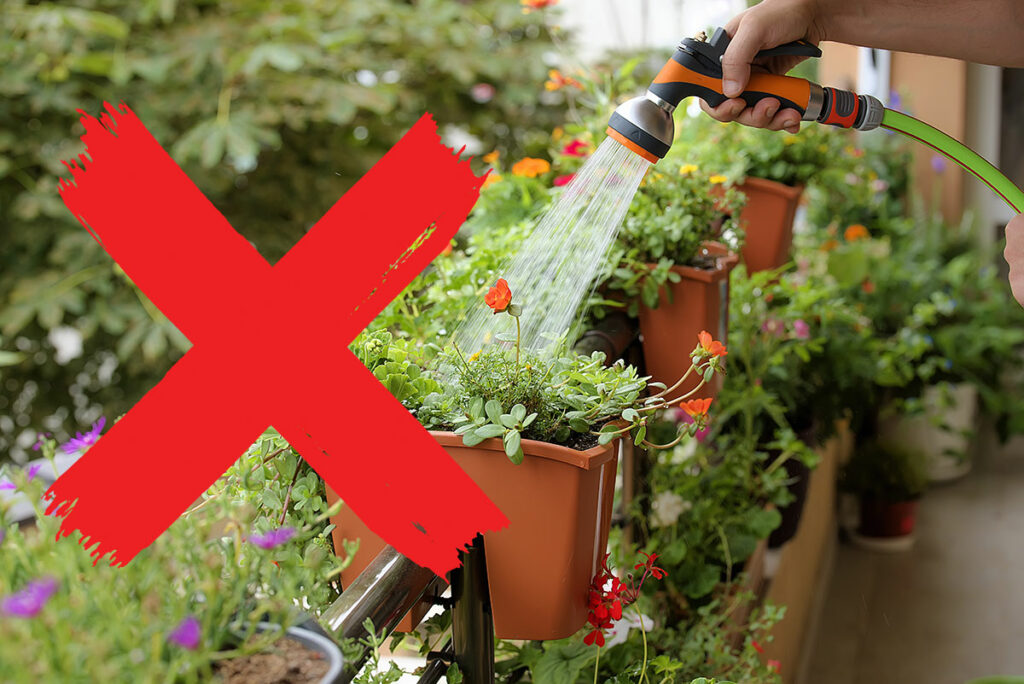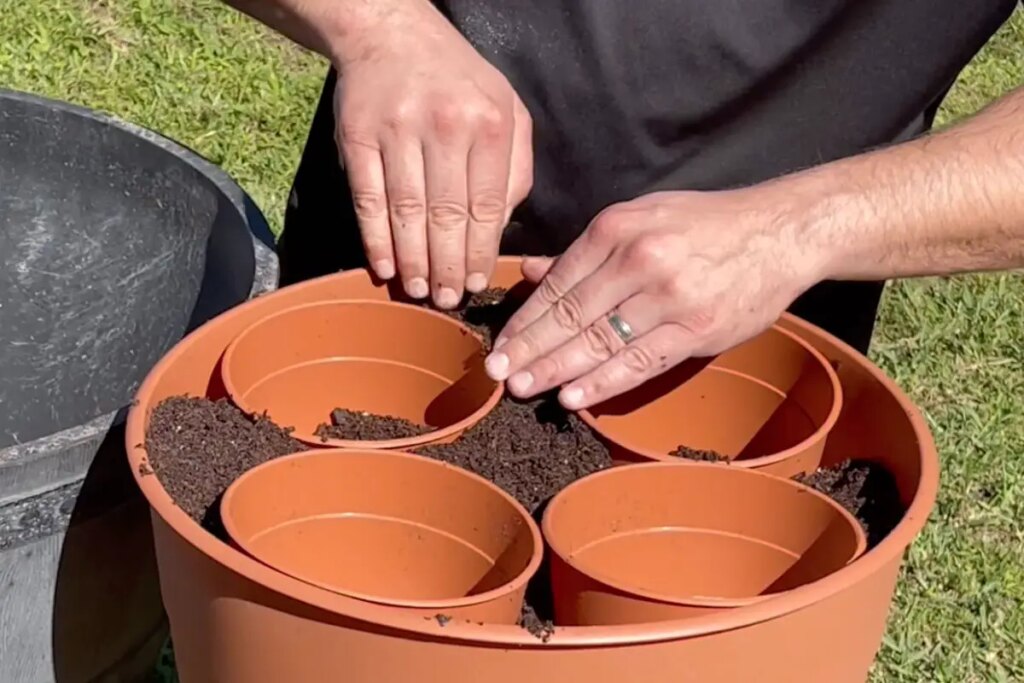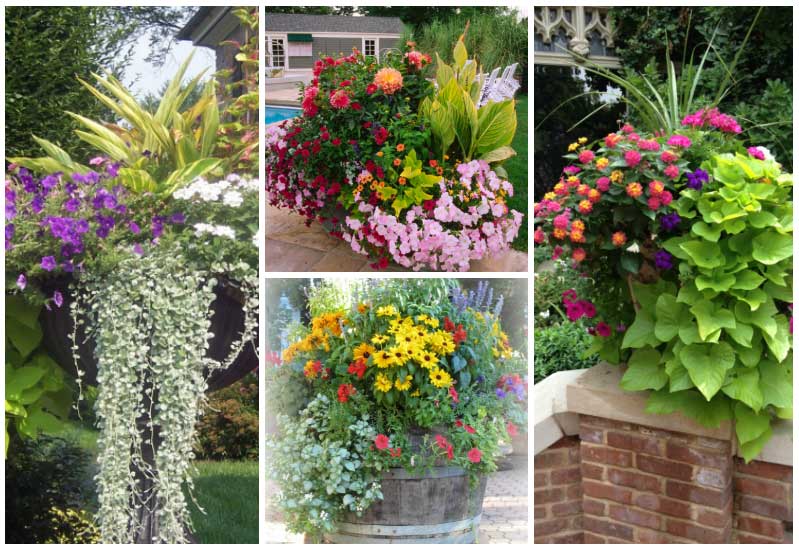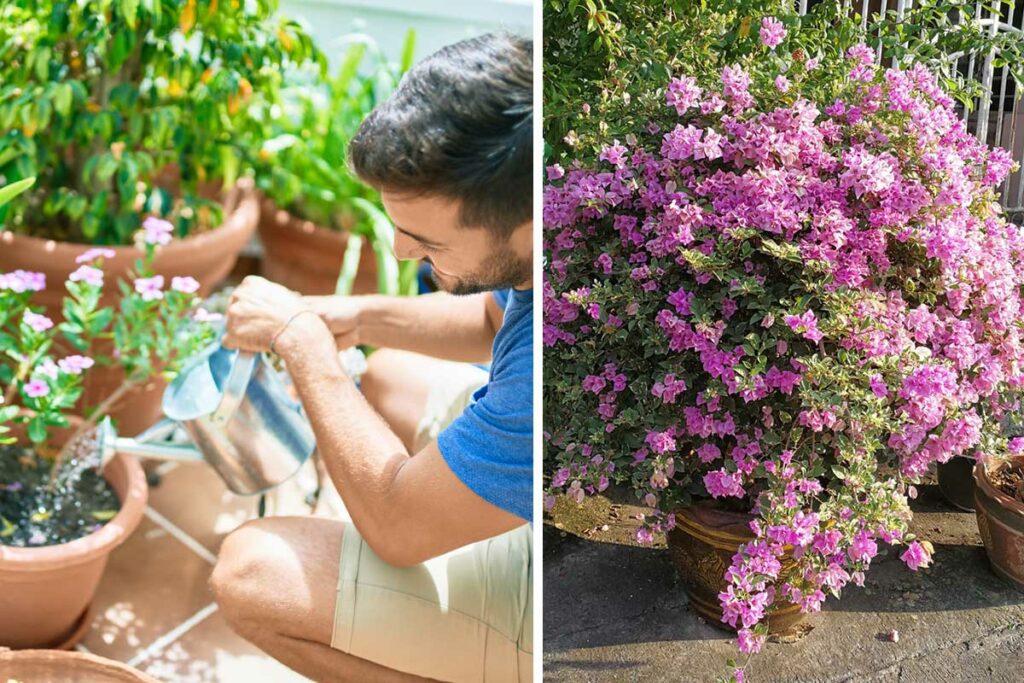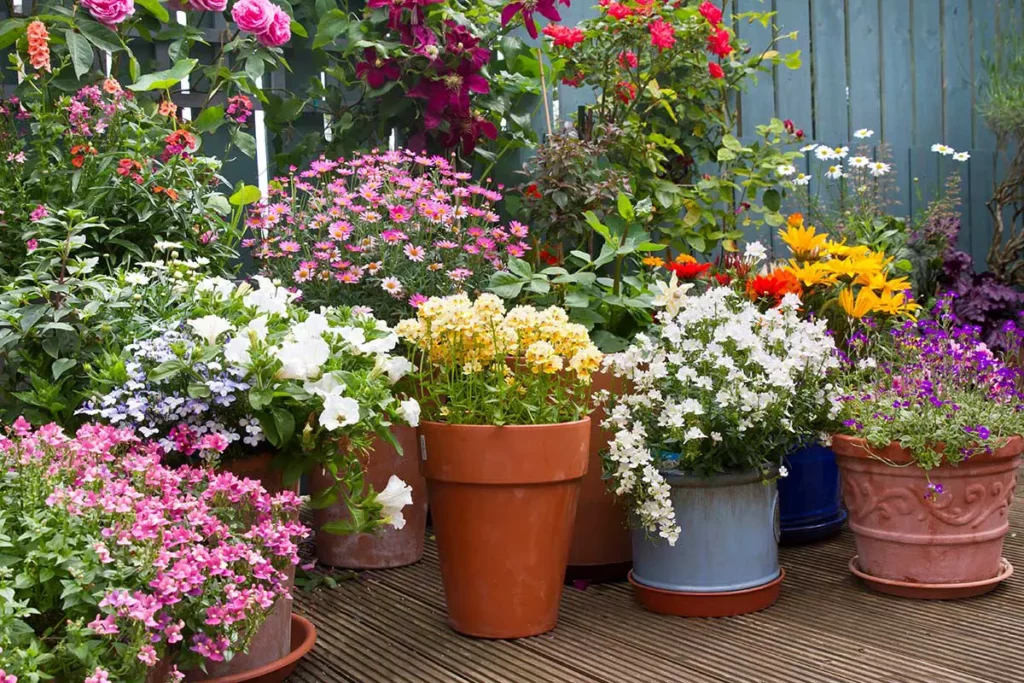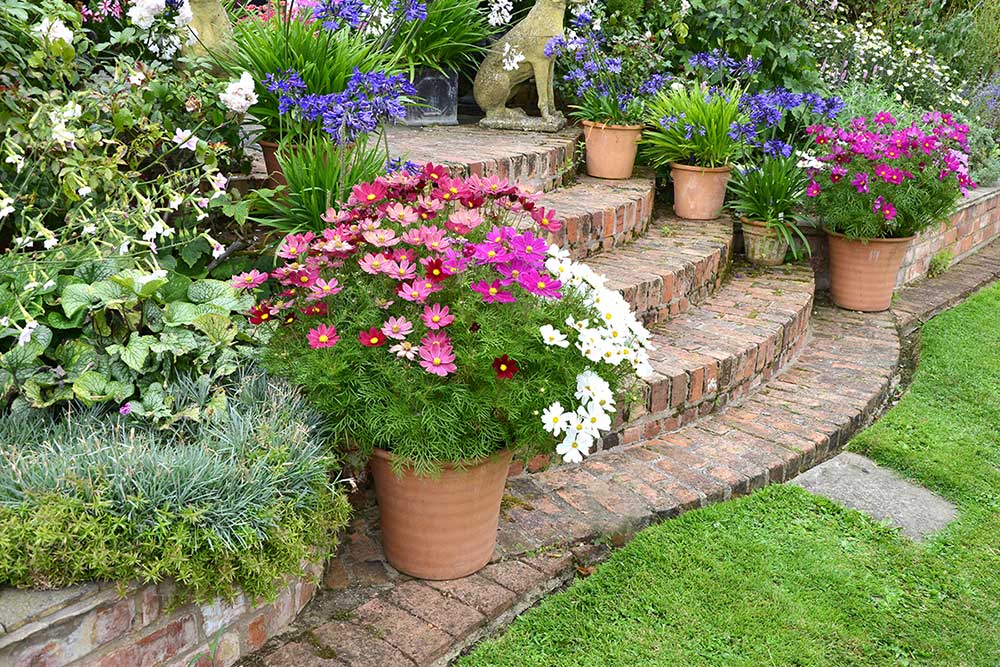
Container gardens allow you to grow flowers and vegetables in areas where the soil is unsuitable for gardening or when you have limited space. They range from simple hanging baskets and window boxes on the patio or balcony to large buckets of flowers lining walkways or along your home’s foundation.
Choose Your Plants
The first step to designing and growing a container garden is choosing the plants you want to grow. The type and size of the plant determine the size and shape of the container you will need. The plants you want to grow also determine the location of your container garden, as all plants have specific light requirements.
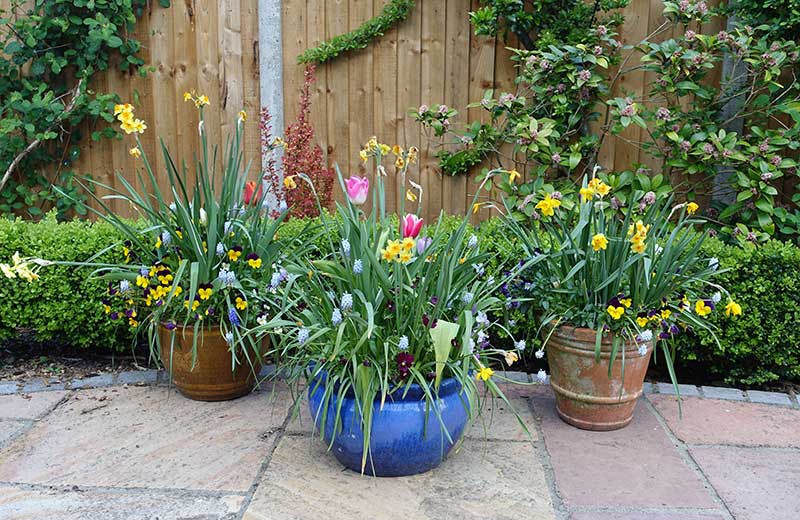
Choosing Containers
- Size: A container needs to be large enough to give your plant’s roots to grow. Many flowers can be grown in a 10 to 12-inch pot, while large vegetables, like tomatoes, need a 5-gallon container. For the most attractive display of ornamental plants, the height of the pot should be approximately half the height of the plant.
- Shape: Planters come in various shapes, but there are some things you should keep in mind when choosing containers for your container garden. Tall pots that are smaller at the base and flute out at the top may be attractive, but they also tend to tip over easily from winds or accidental bumps, especially if you grow large plants. Look for containers with straight sides that do not slope downward if you are planting large flowers or veggies.
The shape of the container also affects how well it retains water and how quickly the soil will dry out in the summer sun. Square or rectangular containers with wide flat bottoms help retain moisture and don’t need to be watered as often as many ornamental pots.
- Material: You can use nearly any recycled container for plant containers. Many chose recycled baskets, trays, and bins to hold their plants. But there are a few things you should know about how the material the container is made of affects plant growth before choosing containers for your flowers and veggies.
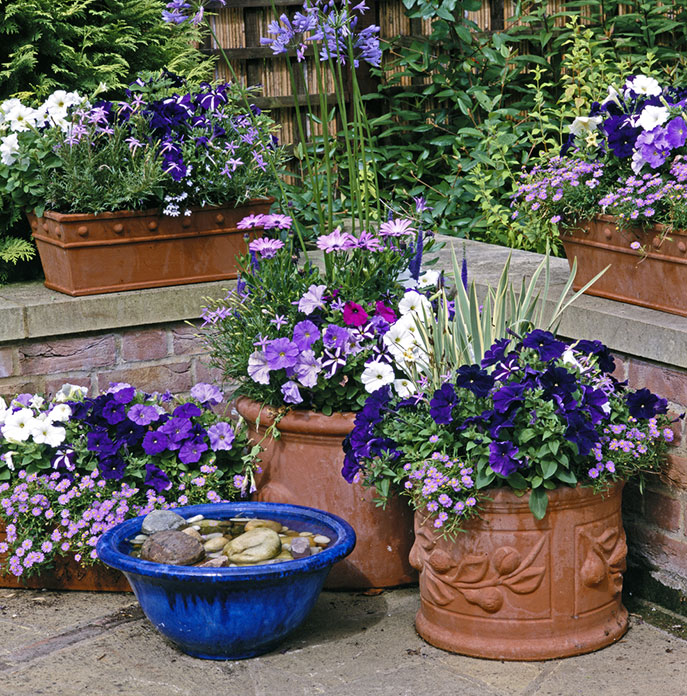
Nonporous Containers: Nonporous containers like plastic pots and window boxes are often inexpensive options for container gardens, but you should know that nonporous containers tend to hold in moisture and do not dry out as quickly as porous containers. This can be an advantage in hot weather or with plants that prefer moist soil.
However, they can also lead to over watering and soggy soil that may even lead to root rot.
Porous Containers: Porous containers like terracotta and unglazed ceramic are attractive, but they can whisk the moisture away from the soil and dry out quickly, leaving your plants starved for water. Porous containers require more frequent watering than nonporous containers do.
- Color: The color of your container also affects how quickly the soil dries and how much the soil heats up. Light-colored containers reflect the sun’s rays and keep the soil cooler. Dark containers absorb the light and heat from the sun and dry out quickly. Likewise, soil in dark-colored containers may overheat and damage tender roots.
Container Gardens Need Good Drainage
Good drainage is vital to healthy plant growth. Make sure the containers you choose have adequate drainage holes to allow excess water to drain away from the roots of your plants. Without good drainage, the soil in the bottom of the pot will remain soggy, even if the top of the soil dries, choking out oxygen to the roots of your plants.
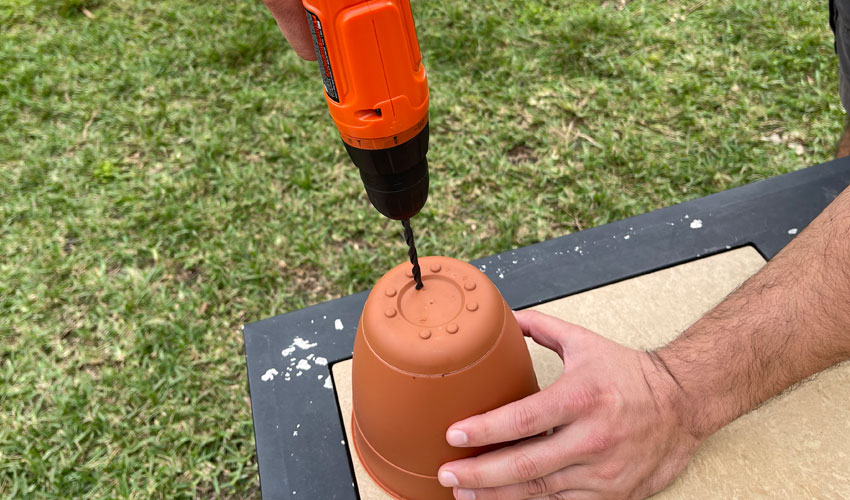
Container Gardens Need Well-Drained Soil
A good potting mix for your container gardens is essential. Ordinary garden soil or all-purpose potting soil is too dense for container gardens.
You can make your own potting mix by combing equal parts peat moss, all-purpose potting soil (or garden loam), and peat moss.
This creates a lightweight soil that drains well, helps retain moisture, and provides plenty of aeration to the roots.
Choosing a Location with Proper Lighting
Assessing the amount of sunlight the area receives is essential to growing a successful container garden. While each plant has its own lighting preferences, most plants need at least 6 hours of direct sunlight a day. You can find the lighting needs for your plants on the plant identification tag.
Full sun refers to areas that receive more than six hours of direct sun. Partial sun means the plant needs between 4 and 6 hours of direct sunlight a day. Shade means the plant does best with less than 4 hours of direct sunlight each day.
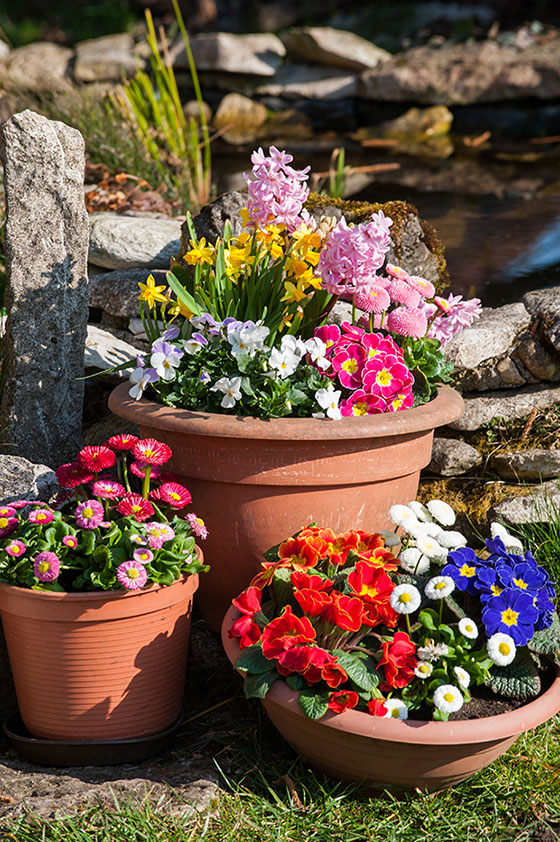
Watering Your Container Garden
Plants grown in containers require more frequent watering than those grown in the ground as the soil dries out quicker. Check the soil frequently to determine if your plants need watering. If the soil feels dry 3 to 4 inches below the surface, it is time to water your container garden.
Water the plants to saturate the soil, and water runs freely through the bottom of the pot. In the heat of summer, hanging baskets and window boxes may need to be watered once or twice a day. Large containers may need to be watered once or twice a week, depending on the weather and the soil condition.
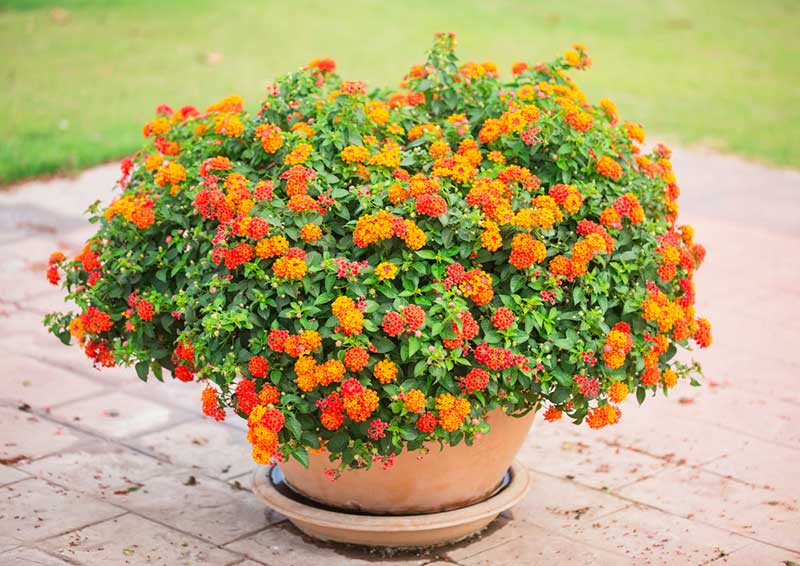
Fertilizing Your Container Garden
Fertilizer can leach through the bottom of the pot with frequent watering and needs to be replaced. Using water-soluble fertilizer, also known as a foliar feeder, is an excellent way to replace nutrients and keep your plants healthy. Apply the fertilizer every 10 to 14 days through the summer to keep your plants well-fed.
Let’s Recap!
Your container garden requires the same basic care as growing your plants in the soil.
- The Right Container
- Good Drainage
- Well-Draining Soil
- Adequate Light
- Consistent Watering
- Fertilizer
Developing a good plant care routine to provide what your plants need will help you grow a successful container garden.





